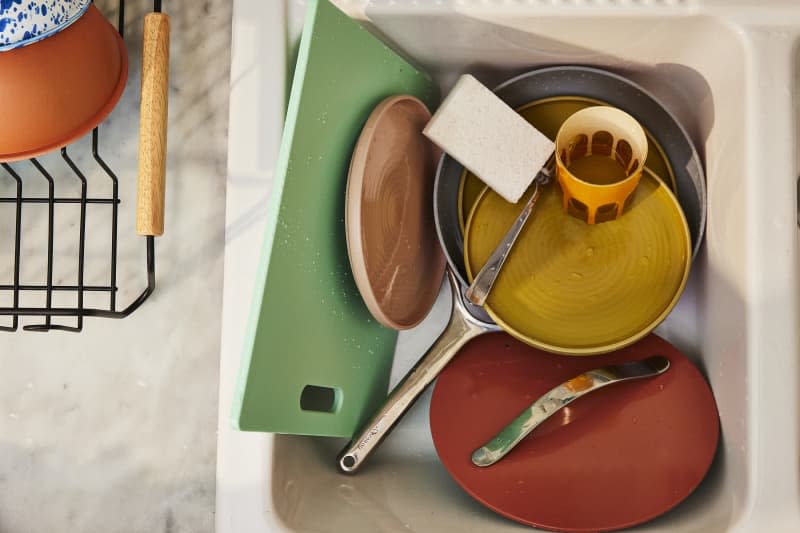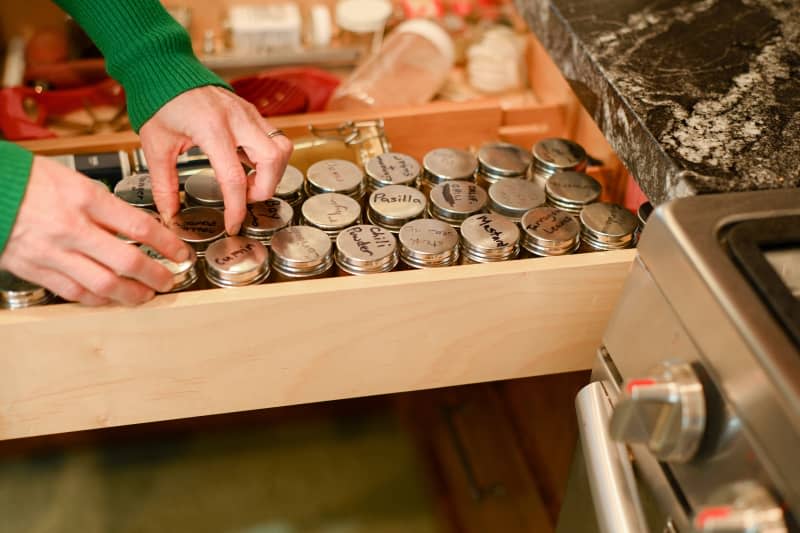Banish Ants Forever with These Expert-Approved DIY Methods

For people, warmer weather usually means wanting to spend a little more time outside after so many months cooped up indoors. Unfortunately, the opposite seems to be true for ants. Once spring weather hits, you’re more likely to find ants crawling around your kitchen, pantry, and other areas of your home (especially those where you store food). Once they’re inside, getting rid of ants at home can be troublesome.
The good news: Unlike hard-to-kill cockroaches, ants don’t carry diseases, and their presence won’t harm your health. But some species of ants can cause damage to your home (and moreover, having insects freely living around your food can be … gross). Here, expert entomologists and pest control experts share their best tips on how to get rid of ants quickly and permanently — and how to keep them from coming back.
Table of Contents
Where do ants come from?
There are more than 700 ant species in the United States, but only a few species cause infestations that could migrate to the interior of a home, says David Price, associate certified entomologist (ACE) and director of Technical Services at Mosquito Joe, a Neighborly company.
“Ants that are drawn to the home’s foundation are in search of water, sugar, or protein,” he explains. “The ant species that typically end up on your counters, in your sink or dishwasher, and floors are drawn by moisture into the house.”
Price says ants might move inside due to a change in weather or the depletion of food sources outside.

What attracts ants to your house?
Overwatering near the home’s foundation will draw them in, Price says, adding that leaving out any pet food, sweet crumbs, or sugar granules on the counters or floors will also attract ants once they’re inside.
In addition, unsanitary things like dirty dishes left unwashed in the sink and trash that isn’t regularly thrown away can create a supply of food for ants, says Frank Meek, technical services manager at Orkin.
“The type of food most attractive to ants depends on the species, but most will eat sugars at some point, along with lipids, carbs, and proteins,” Meek says. “The food preference and needs of the common ant can change daily or in some cases hourly through the day.”
How to Get Rid of Ants
A liquid ant bait station bought over-the-counter can be effective, Price says — however, you must place it outside where you see the trail at the house or porch foundation. If you place it inside, you might inadvertently draw the ants into your home, making the infestation worse in many cases.
As for over-the-counter liquid spray products, these need to be applied prior to an infestation around the foundation to repel future foragers.
Price recommends a spring application of the spray and then again every two months through the summer and into the fall as the ants are still working during the winter months inside the colony.
For those who prefer to DIY, you might also try this non-toxic homemade ant killer made with baking soda and powdered sugar to keep ants at bay in the kitchen.
And if you still aren’t getting a handle on your ant problem, entomologist Dr. Tracy Ellis at FarmSense says to consider calling several pest control services and discussing their approach, adding that while “spot-treating may feel good, it only impacts a few individuals of many thousands in the whole colony.”
How is climate change affecting ant infestations?
The drastic weather changes send signals to the ant population to move to higher ground or to go deeper in the ground, Price says. Additionally, it causes disruption in food sources, causing more aggressive foraging.
“Ants are sensitive to changes in temperature,” Meek explains. “As environmental conditions change, many species are able to expand their territories and move into new ecosystems. In some cases, the invading species fit in; in others, they can take over and cause harm.”

Are ants harmful to humans or pets, and can they damage furniture?
While the majority of ants are a nuisance to people, a few are known to carry and transfer pathogens to other surfaces where they can potentially be picked up by people, Meek says, adding that “other species, like fire ants, can deliver a painful and potentially dangerous sting to people and animals.”
One particular ant to keep an eye out for, though, is the carpenter ant.
Meek notes that carpenter ants can further damage wood that is already compromised by water damage or rot. In some areas of the United States, carpenter ants are capable of doing extensive damage to wood in homes and buildings.
How to Get Rid of Carpenter Ants
Ellis says you must stay vigilant to keep ants from coming back and act at the first signs of a small invasion before it progresses. She also says that proper identification is key.
“Ants range from harmless to stinging, some emit odors, and some excavate wood to build nests,” she explains. “To know what harm or damage an ant might pose and how to control them, safely capture 8 to 10 intact ants and submit them to a pest control company, university extension, or local entomologist for identification.”

How can you keep ants from coming back?
Price says there are several things a tenant or homeowner can do both inside and outside to reduce ant populations from invading their homes.
Keep direct moisture away from the foundation.
Keep mulch, leaf litter, and vegetation at least 10 to 12 inches away from the foundation.
Trim back any tree branches or shrubs touching the house so ants can’t use them as a bridge into your home.
Move any piles of lumber, firewood, bricks, and stones away from your home’s exterior.
Inside, clean up any food spills and crumbs as quickly as possible.
Rinse all food and drink containers thoroughly before placing them into trash or recycling bins.
Remove food debris from your sink after washing dishes and cookware, and clean out strainers that collect food particles in sink drains.
Store food in airtight containers or keep food refrigerated.
If possible, do not leave pet food out continuously.
Check both interior and exterior water sources for leaks.
Seal up any gaps, cracks, or holes around windows, doors, and foundations.

